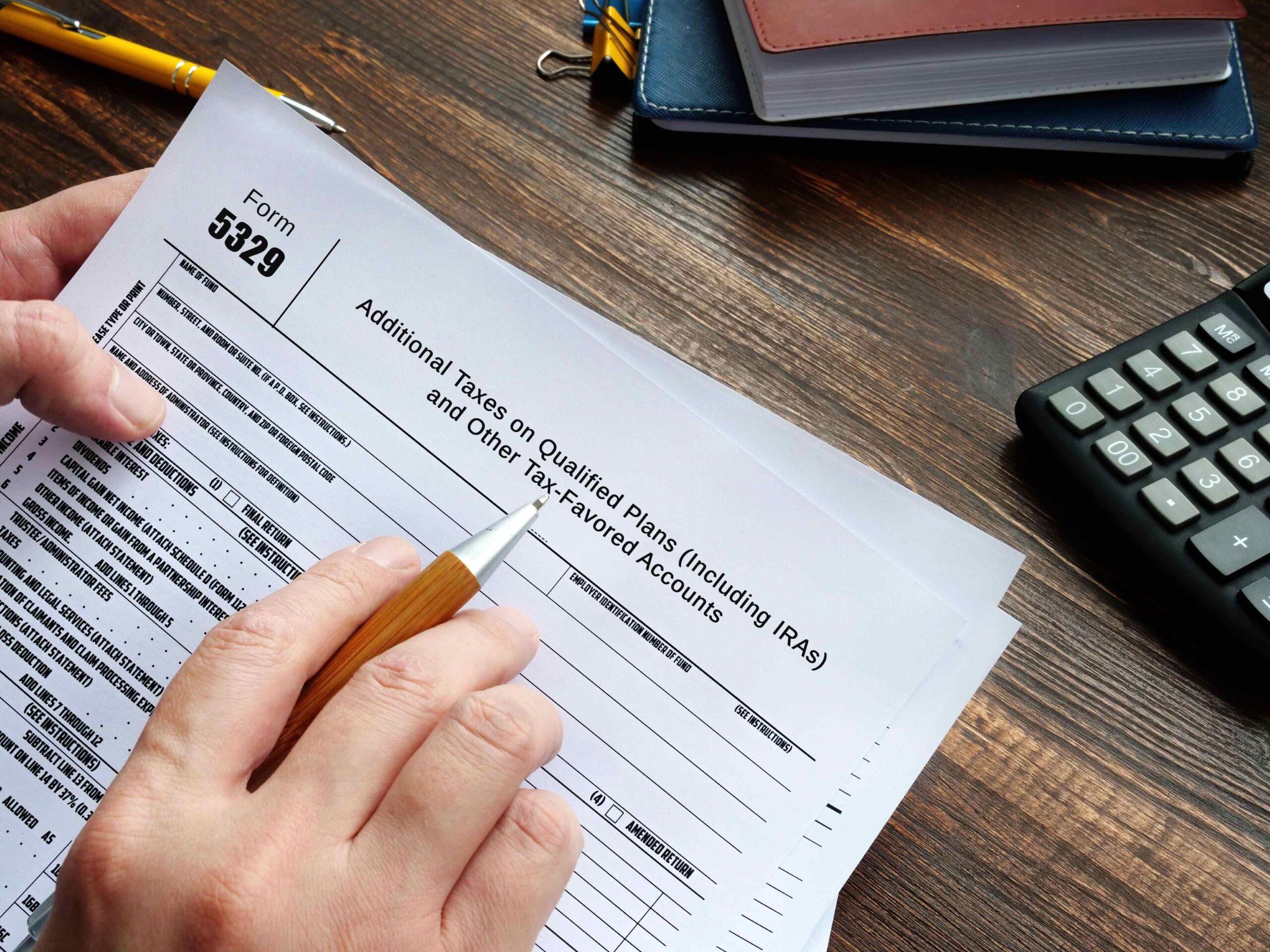What it is and how to complete it
Commonly asked questions about the form and how to complete it.
When filing tax returns, it’s important to report all income sources accurately. For accountants, you must also remind your clients that early distributions from qualified retirement plans or other tax-favored accounts may incur penalties and trigger the need to file Form 5329 – Additional Taxes on Qualified Plans (Including IRAs) and Other Tax-Favored Accounts.
Let’s look at what this form is all about and how to advise clients who may need to file it.
Jump to:
What is Form 5329?
The IRS uses this tax form to report additional taxes on qualified retirement plans, including individual retirement Accounts (IRAs) and other tax-favored accounts. Taxpayers with certain tax-related situations requiring them to report and calculate additional taxes or penalties file this form.
Some common scenarios that may require the filing of Form 5329 include:
- Early withdrawals. If an individual takes money out of a qualified retirement plan or IRA before reaching the age of 59½, they may be subject to early withdrawal penalties. Form 5329 is used to calculate and report these penalties.
- Excess contributions. If a taxpayer contributes more than the allowed amount to certain tax-advantaged accounts, such as an IRA, they may need to report and pay additional taxes using this form.
- Missed required minimum distributions. Individuals who fail to take the required minimum distribution (RMD) from their qualified retirement accounts, such as a 401(k) or traditional IRA, may use Form 5329 to report and calculate any associated penalties.
- Other tax-favored accounts. The form also covers other tax-favored accounts, such as Coverdell education savings accounts (ESAs), qualified tuition programs (QTPs), and Achieving a Better Life Experience (ABLE) accounts.
What are Form 5329 exceptions?
Individuals may be exempt from filing this form under the following circumstances:
- Total and permanent disability. Early distributions due to total and permanent disability are not subject to the 10% early withdrawal penalty.
- Substantially equal periodic payments. Individuals may avoid the early withdrawal penalty by receiving substantially equal periodic payments made at least annually for a minimum of five years or until reaching age 59½, whichever comes later.
- Death. Early distributions taken due to the account owner’s death are not subject to the 10% early withdrawal penalty.
- Separation from service. Distributions from qualified retirement plans, excluding IRAs, after leaving an employer in or after the year of reaching age 55 — age 50 for qualified public safety employees — do not incur a penalty.
- Unreimbursed medical expenses. Individuals can avoid early withdrawal penalties if they use the distribution to cover unreimbursed medical expenses up to the amount paid minus 7.5% of their adjusted gross income (AGI) for the year.
- Qualified domestic relations order (QDRO). If retirement plan assets are divided between spouses under a QDRO due to divorce, the 10% penalty doesn’t apply to early distributions, though this applies only to employer plans, not IRAs.
- Health insurance premiums. Using IRA assets to pay for ongoing health insurance premiums after a job loss — while receiving unemployment compensation for 12 consecutive weeks — qualifies for an exception.
- Qualified higher education Early distributions for qualified higher education expenses — for example, tuition and fees — can be exempt from the penalty, provided they are paid to an eligible institution.
- First home purchase. Individuals can take up to $10,000 in early distributions from an IRA for the purchase of a first home without incurring the early withdrawal penalty.
- IRS levy. If the IRS levies retirement accounts to satisfy an unpaid tax debt, the account owner is not subject to the early withdrawal penalty.
- Qualified reservist distributions. Qualified reservists serving active duty for at least 180 days are not subject to the early withdrawal penalty.
- IRA rollovers. Rolling over one retirement account to another within 60 days generally doesn’t trigger the 10% penalty.
What is a Form 5329 waiver of penalty?
A Form 5329 waiver of penalty is a written request to the IRS asking to forgive or reduce the penalty associated with specific situations. For example, if a taxpayer fails to take the RMD from their retirement account and believes they have a reasonable cause for the oversight, they can submit a written request to the IRS asking that it waive the penalty.
The written explanation is submitted along with this form, detailing the circumstances that led to the failure to comply with the tax regulations. The IRS reviews such requests on a case-by-case basis and may grant a full or partial waiver if they find the reasons valid.
How to report excess contributions on Form 5329
To report excess contributions to your traditional IRA, Roth IRA, Coverdell ESA, Archer MSA, HSA, or ABLE account, use lines 17, 25, 33, 41, or 49 of Form 5329 and include the relevant amounts on Schedule 2 of Form 1040, Line 8.
Form 5329 required minimum distributions
Required minimum distributions are mandatory withdrawals from certain retirement accounts, such as traditional IRAs and 401(k)s, starting at a specific age. If an individual fails to take the RMD from their retirement account for a given tax year, they are subject to an additional tax penalty and must file Form 5329.
How to fill out Form 5329 for missed RMD
The IRS instructions for Form 5329 include a specific section, “Part IX—Additional Tax on Excess Accumulation in Qualified Retirement Plans (Including IRAs),” which is dedicated to reporting and addressing missed RMDs. See Line 55 for more information.
Form 5329 health savings account considerations
If you, someone on your behalf, or your employer contributed more to your health savings account (HSA) than is allowable, or you had an amount on line 49 of your Form 5329, you may owe additional tax.
Can you file Form 5329 by itself?
Yes. If you don’t have to file an income tax return, you can complete and file this form by itself. If you file the form by itself, you cannot file it electronically.
Where to file Form 5329 by itself
If you aren’t required to file an income tax return, you can complete and file Form 5329 by itself at the time and place you would be required to file Form 1040, 1040-SR, or 1040-NR. Remember: you can’t file it electronically if you file it by itself.
BlogNavigating state taxes on retirement income is a critical aspect of financial planning for retirees. While federal tax laws apply uniformly across the country, state tax regulations can vary widely. |
How to stay up to date on retirement tax changes
For accountants, keeping abreast of changes to retirement taxes is crucial as you advise your clients. With Checkpoint Edge, our innovative tax research tool, you’ll get all the latest tax updates, commentary, and insights to help you stay one step ahead.
Alongside UltraTax CS, our professional tax preparation software with a full line of federal, state, and local tax programs, you’ll save time and boost productivity.






